From its drawn-out midcentury downturn up until the early 1990s, downtown Tacoma, Washington, was the epitome of urban decay: dilapidated, dangerous, and—save for isolated pockets of life—wholly deserted. This neglect was particularly evident along the gritty southern edge of downtown in the blocks flanking Union Station, a grand Beaux-Arts structure completed in 1911 as the western terminus of the Northern Pacific Railway. Following a period of abandonment in which the building slipped into disrepair, the 1992 redevelopment of Union Station—a copper dome-topped symbol of the port city’s early prosperity, subsequent decline, and later comeback—as a federal courthouse encouraged further revitalization efforts in the surrounding historic warehouse district. Beginning in 1997 with the opening of a permanent campus for the University of Washington Tacoma (UW Tacoma) within roughly a half-dozen restored brick industrial buildings just uphill from Union Station, downtown’s adaptive reuse–driven renaissance officially kicked into high gear.
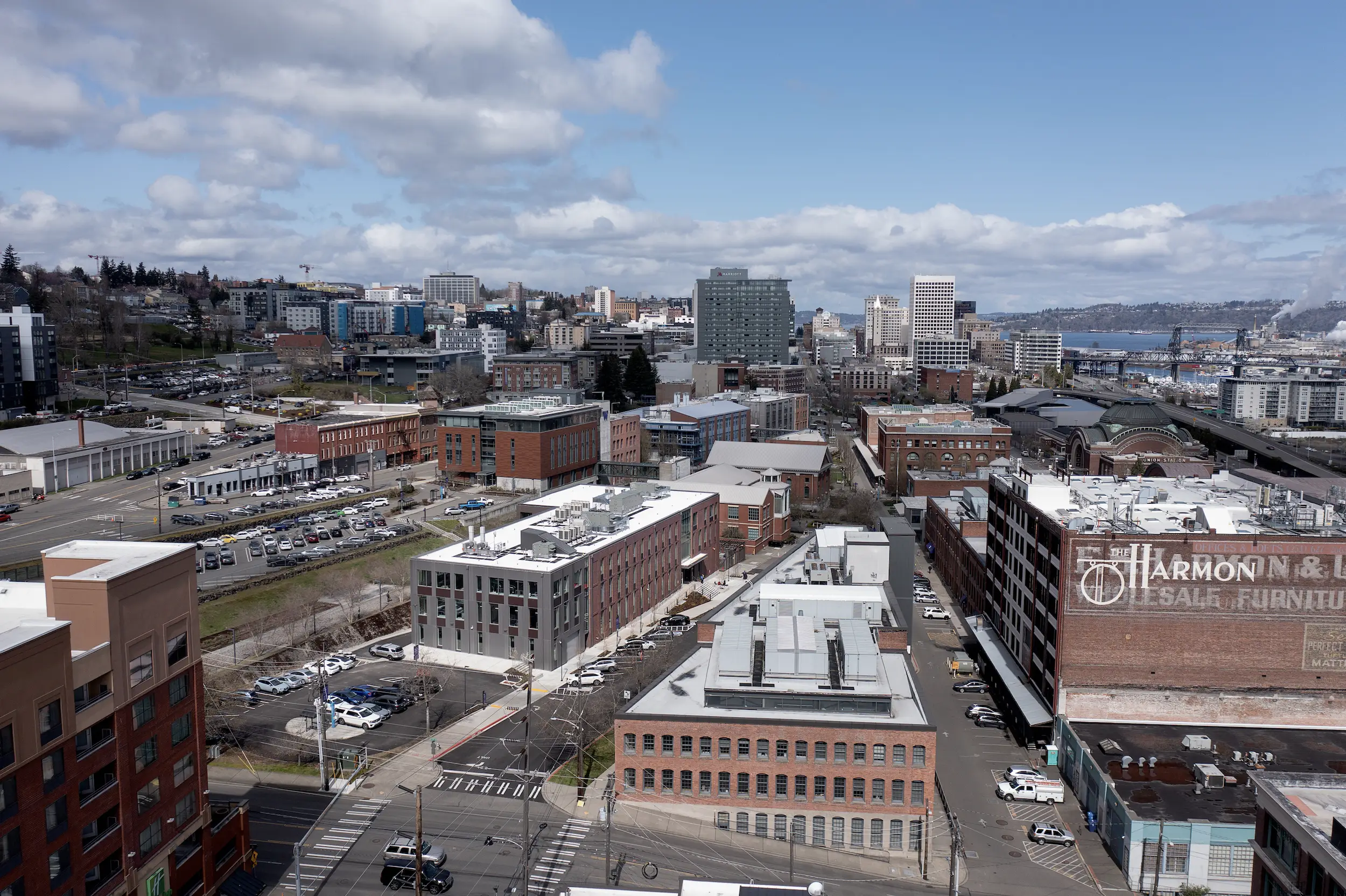
The UW Tacoma campus looking north toward downtown. Union Station and the Tacoma Art Museum, designed by Antoine Predock with an expansion by Olson Kundig Architects, can be seen in the distance on the right with Commencement Bay beyond. Photo © Jeremy Bittermann / JBSA.
The newest academic facility at UW Tacoma, Milgard Hall, isn’t housed within a once-blighted industrial building like most of its immediate neighbors on the 46-acre campus. The three-story, 55,000-square-foot mass timber structure completed in late 2022 is, however, a sympathetic one. With its north and east facade clad in local brick, the L-shaped Milgard Hall blends into the warehouse district’s rich historic context; directly adjacent are a 1902 electric powerhouse-turned-library building and the flatiron-shaped Mattress Factory Building, which is home to classrooms and administrative offices. Meanwhile, a corrugated metal rainscreen system wrapping the south and west elevations of the new building offers a subtle taste of the “new” while programmatically corresponding with the lab spaces housed within.
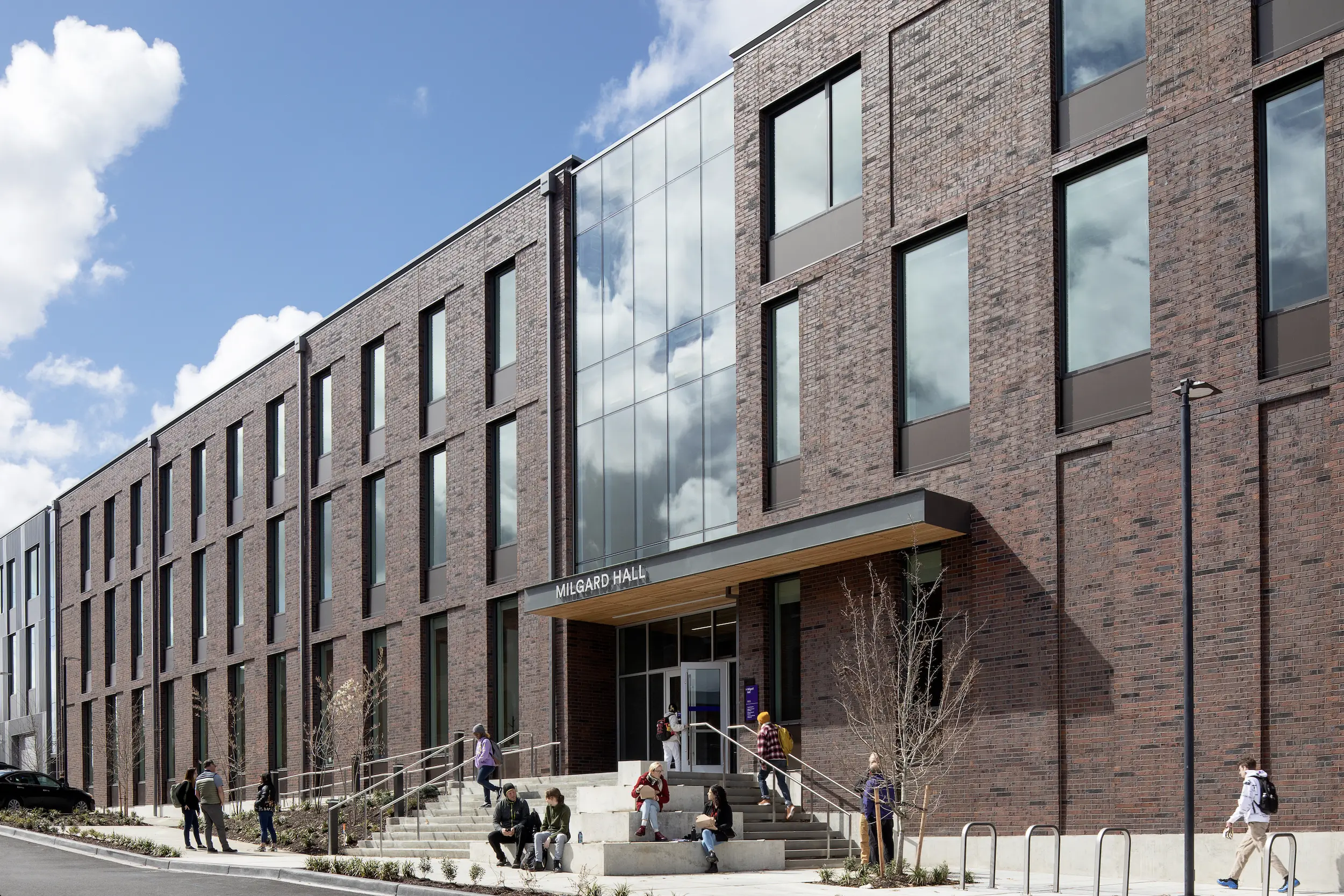
The red-brick facade references the redeveloped historic industrial buildings comprising a bulk of the UW Tacoma campus. Photo © Jeremy Bittermann / JBSA
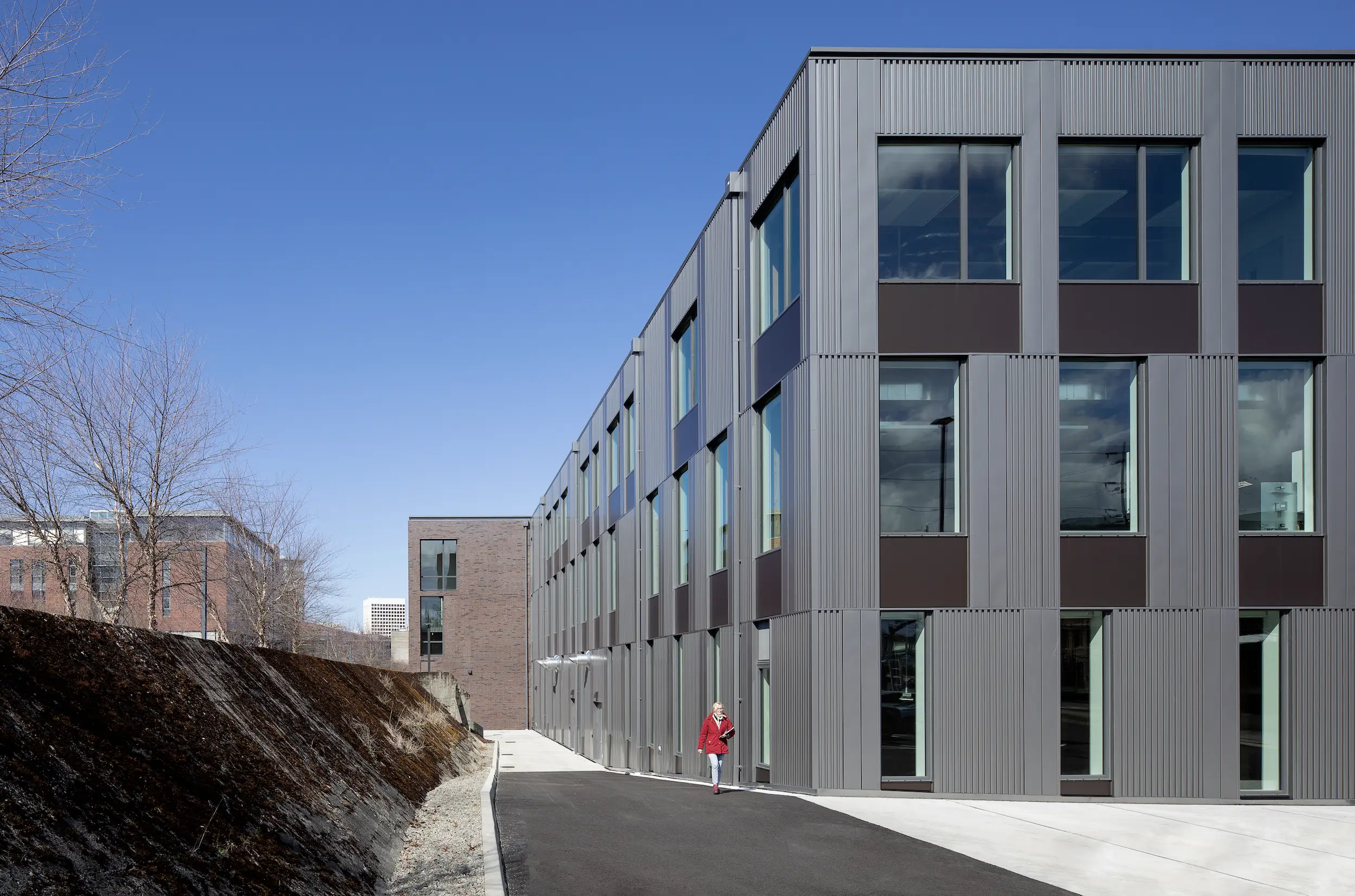
Metal panel cladding corresponds with the building's lab spaces. Photo © Jeremy Bittermann / JBSA
“Where the interior program is more future-facing, we saw an opportunity to use a newer exterior material—something that had a different tectonic,” said Dominic Griffin, project director at Architecture Research Office (ARO), which closely collaborated with the university and Andersen Construction on the $43 million design-build project—the first in the Pacific Northwest for the 30-year-old New York firm.
Milgard Hall’s multiple lab and lab support spaces—joined by offices, meeting rooms, machine and fabrication shops, a pair of large 80-person multipurpose classroom spaces, an outdoor science court, and a double-height High Impact Practices teaching space that doubles as a community event venue—are at the core of the STEM–focused facility, which brings together three disparate UW Tacoma schools/divisions under one roof: the Milgard School of Business, the School of Engineering & Technology (SET), and the Global Innovation & Design (GID) Lab.
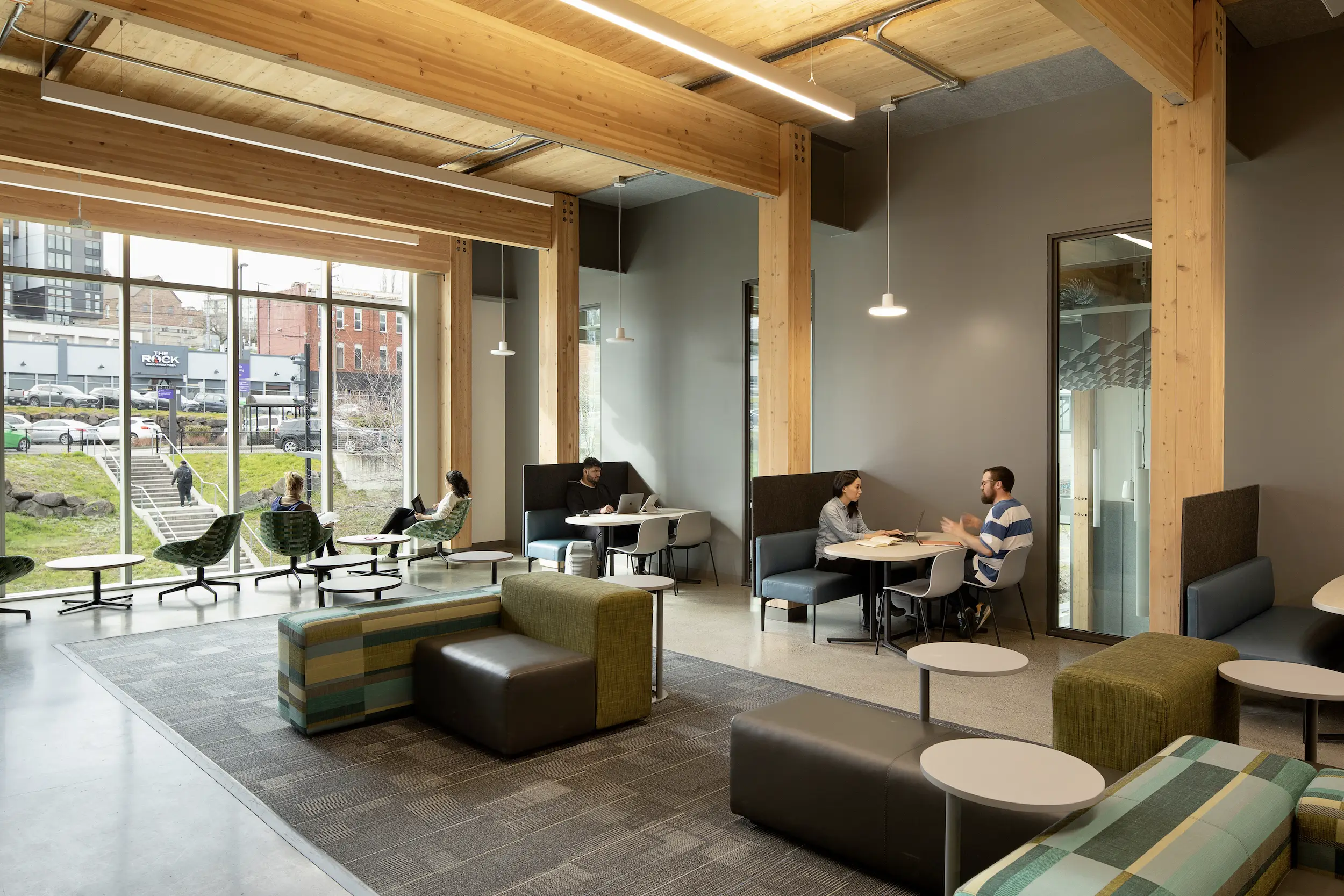
A social area in the Connector looking out toward Jefferson Avenue. Photo © Jeremy Bittermann / JBSA
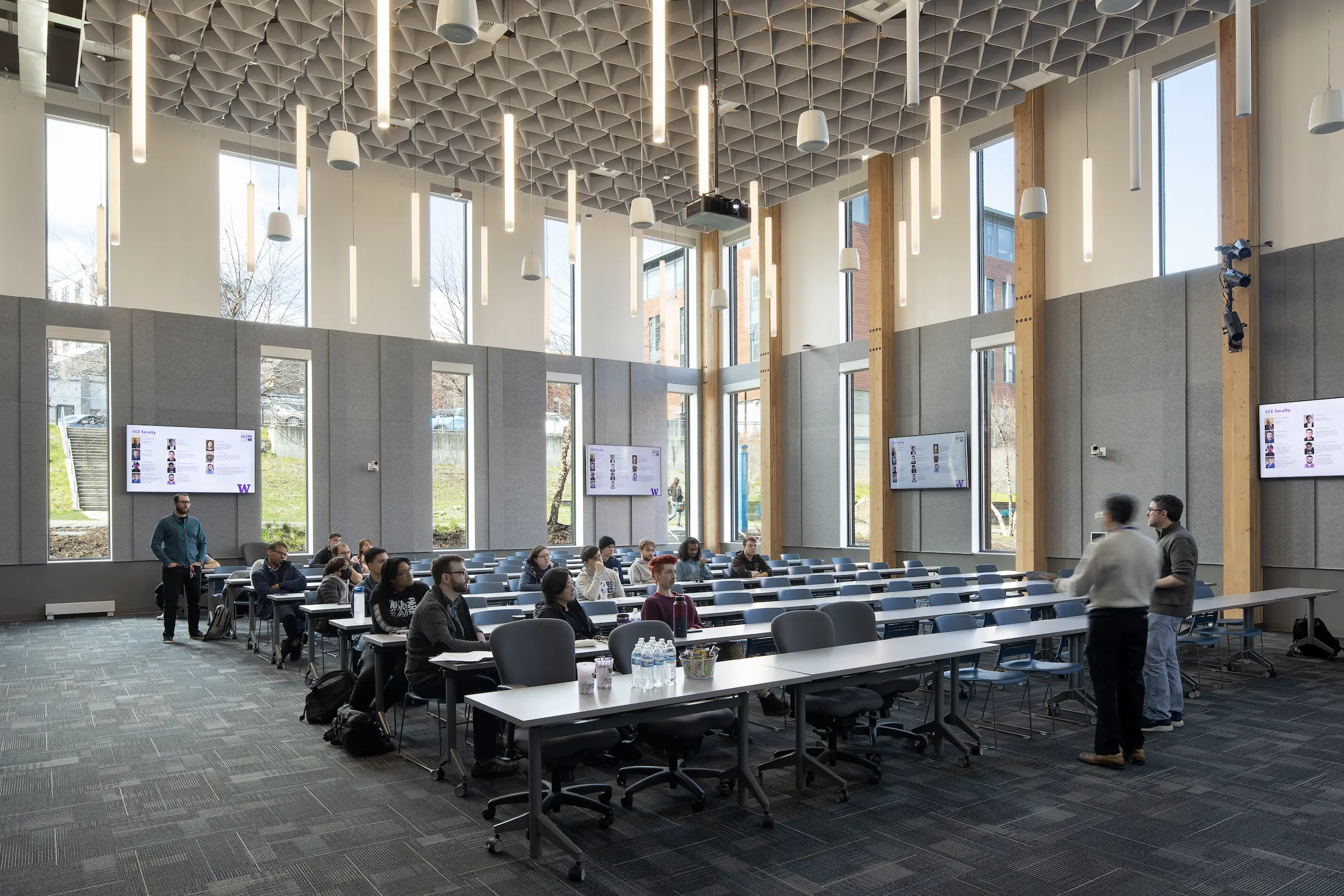
The double-height High-Impact Practice Space (HIPS) on the first floor. Photo © Jeremy Bittermann / JBSA
“It’s a pretty unusual mix of program, but all three of these primary occupants are directly tied to the community,” says ARO principal in charge Kim Yao, noting UW Tacoma’s role as an urban serving institution. “The building is supporting a broader investment in Tacoma and the South Sound.”
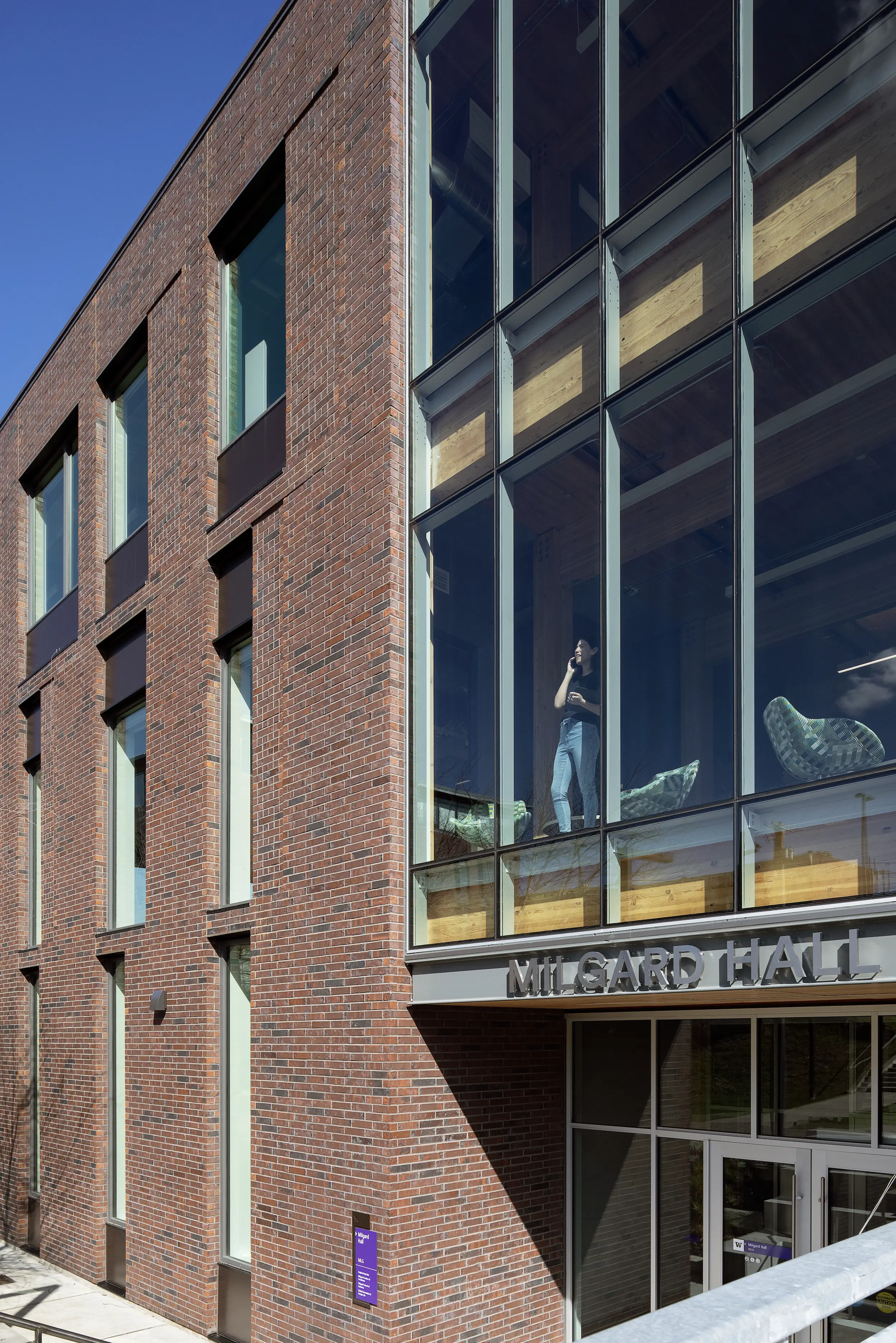
1
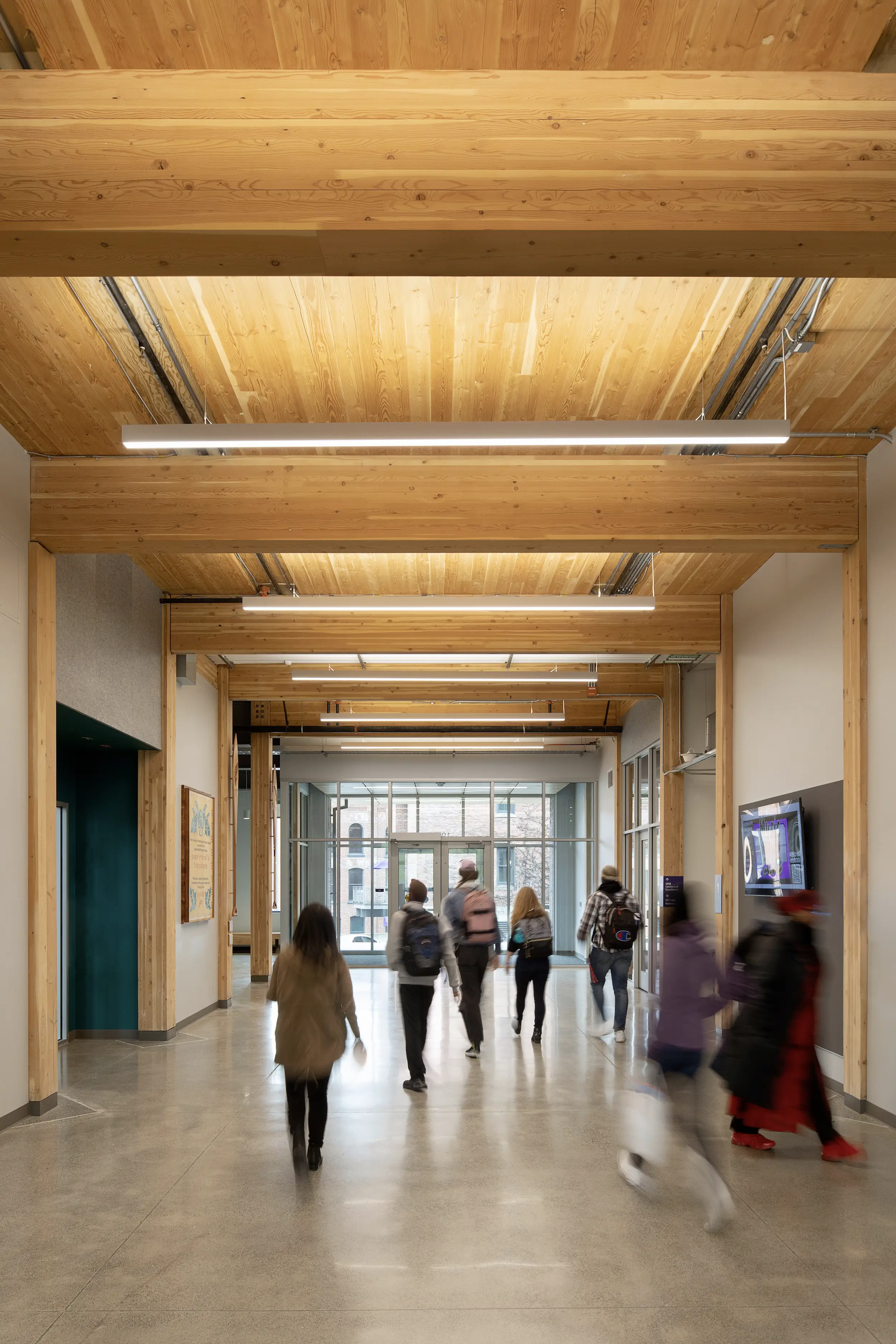
2
A student looks out at on the campus from the second-floor Connector (1); view of the first-floor Connector near the main entrance Photos © Jeremy Bittermann / JBSA
Pointing out that SET launched its civil and mechanical engineering programs with the debut of Milgard Hall, Griffin adds that “the school saw this building as an opportunity for these new programs—so we worked with that to create spaces that support two industries that are growing and will attract more students to the Tacoma campus.”
Despite being shared by three different UW Tacoma entities (the large classrooms are also for campus-wide use), Milgard Hall aims to stimulate cross-disciplinary interaction between students and faculty. The Connector, an “open circulation and collaboration zone” that acts as a common space–slash-primary corridor on all three floors, is the main venue for this interdepartmental synergy.
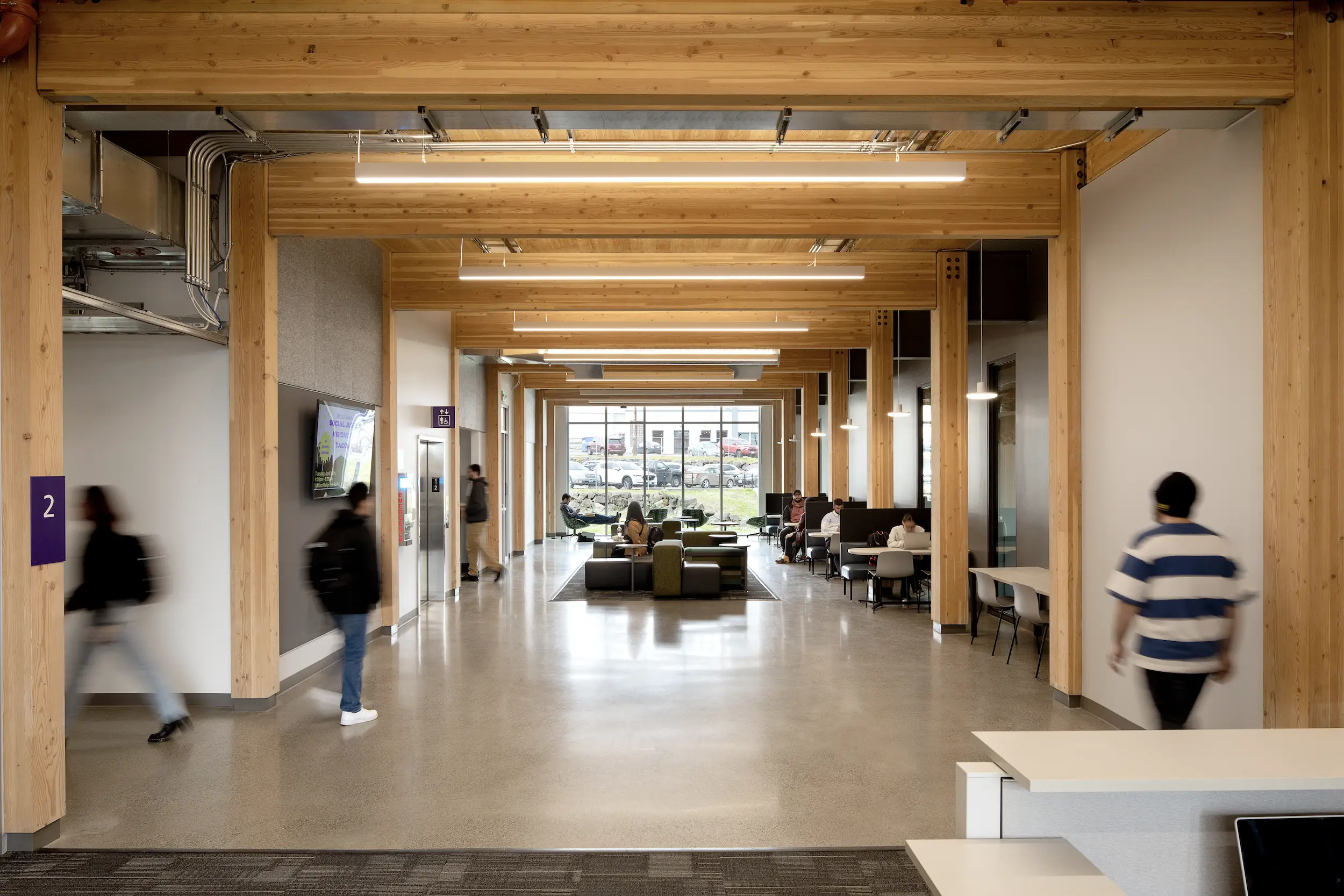
Exposed glulam columns and beams in the Connector. Photo © Jeremy Bittermann / JBSA
“On the ground floor, the Connector extends through the building and creates that stitch going up the hill, tying the building into the rest of the campus and into the city,” said Yao, referencing the topographically daunting building site (previously a surface parking lot atop a coal bunker, which was left undisturbed during construction) located toward the bottom of a hill rising above downtown’s main commercial drag, Pacific Avenue. The Connector also links up to the Prairie Line Trail, a public art–dotted linear green space immediately to the west of Milgard Hall that traces the route of a long-retired rail artery; designed by Seattle-based landscape architecture and urban design studio PLACE, the trail bisects the sloped UW Tacoma campus between South 17th and 21st Streets.
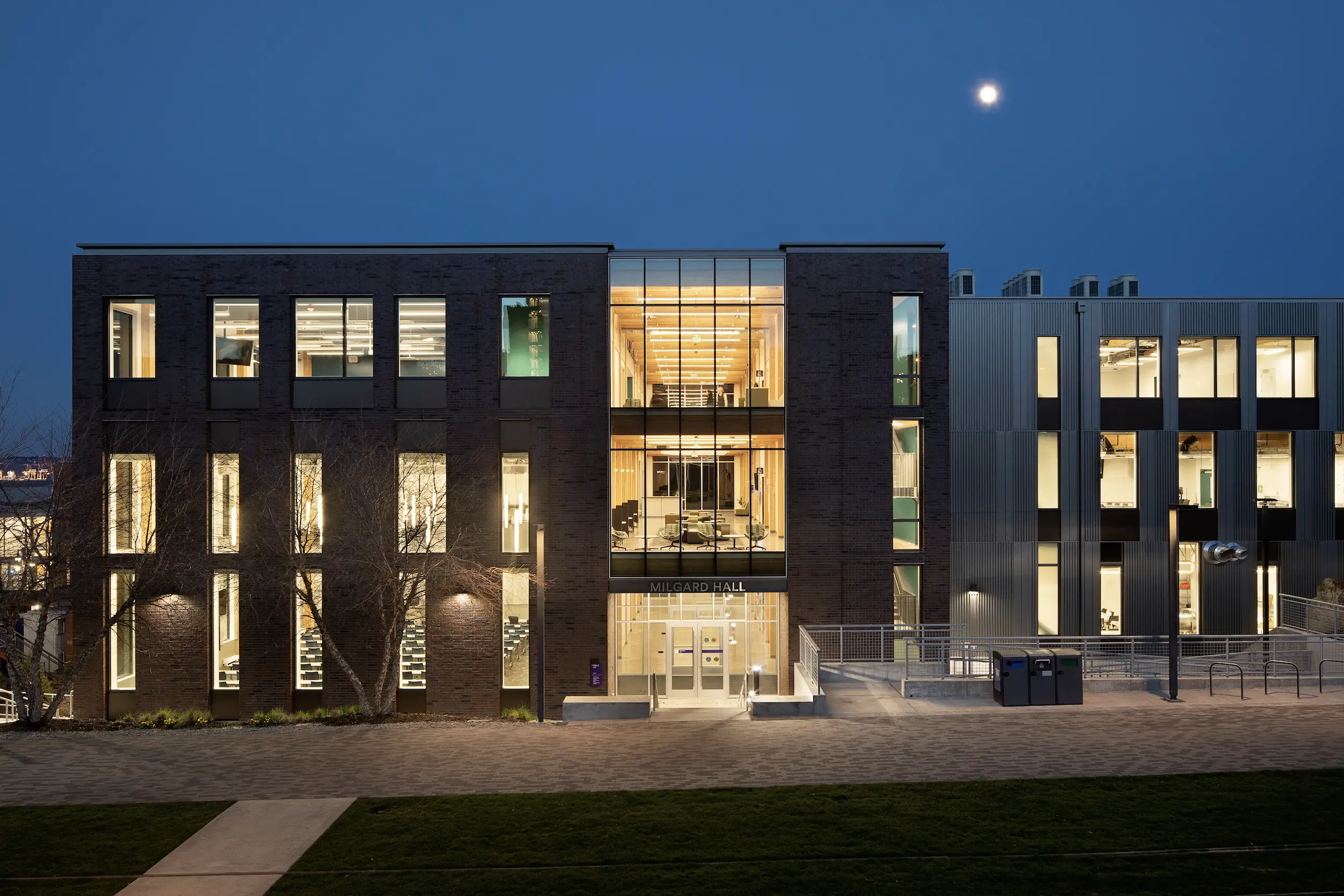
Evening view of Milgard Hall looking into the Connector, the building's primary circulation and social space. Photo © Jeremy Bittermann / JBSA
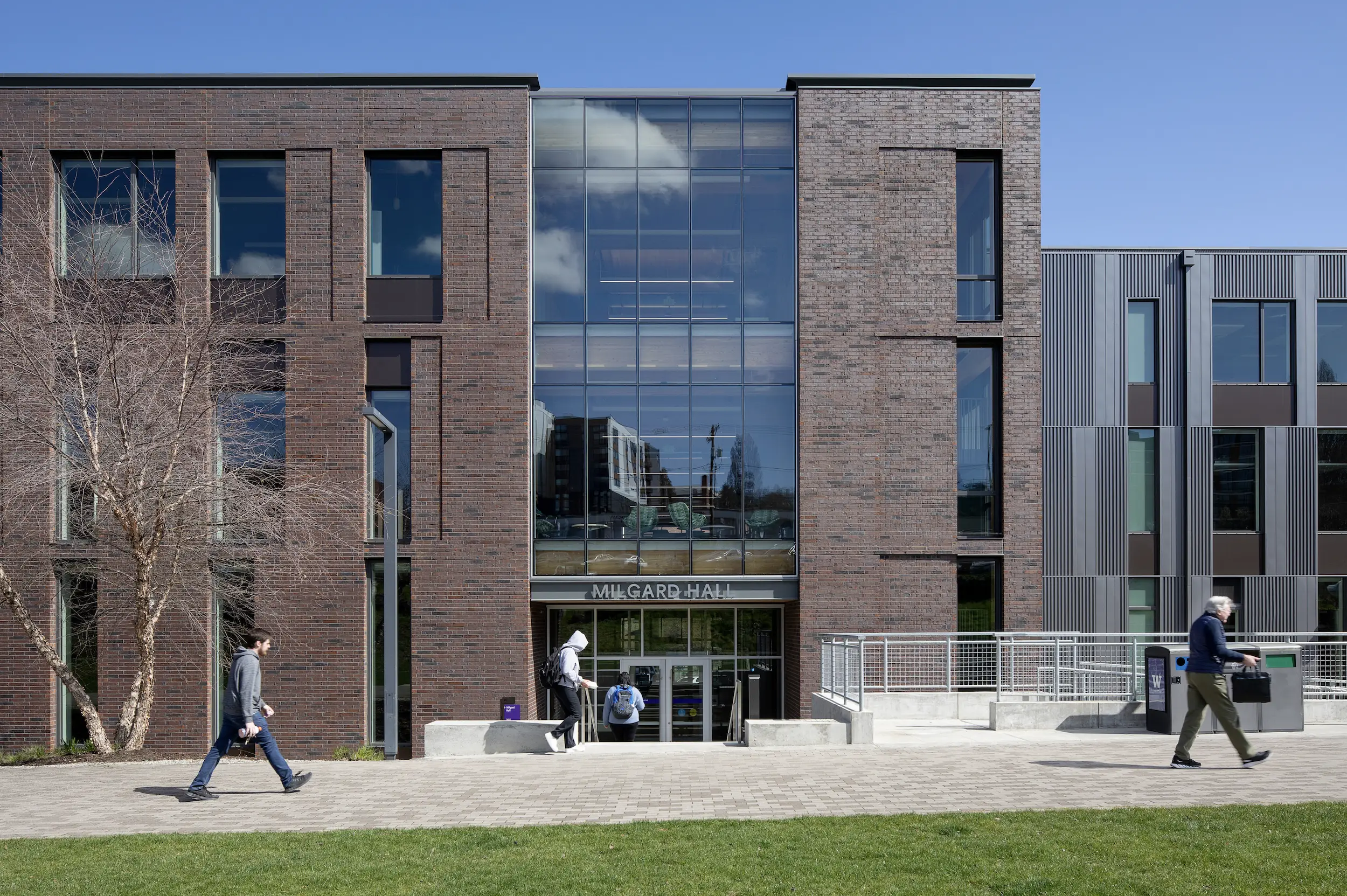
Daytime view. Photo © Jeremy Bittermann / JBSA
“One of the things that was strategically nice about this location is that it became connective both in the east-west and north-south axis,” Yao continued. “In terms of dealing with that topography going up the hill, the building offers accessible routes, both through the building and then also at its perimeter. Increasing accessibility on campus was a big deal because there’s a lot of grade change.”
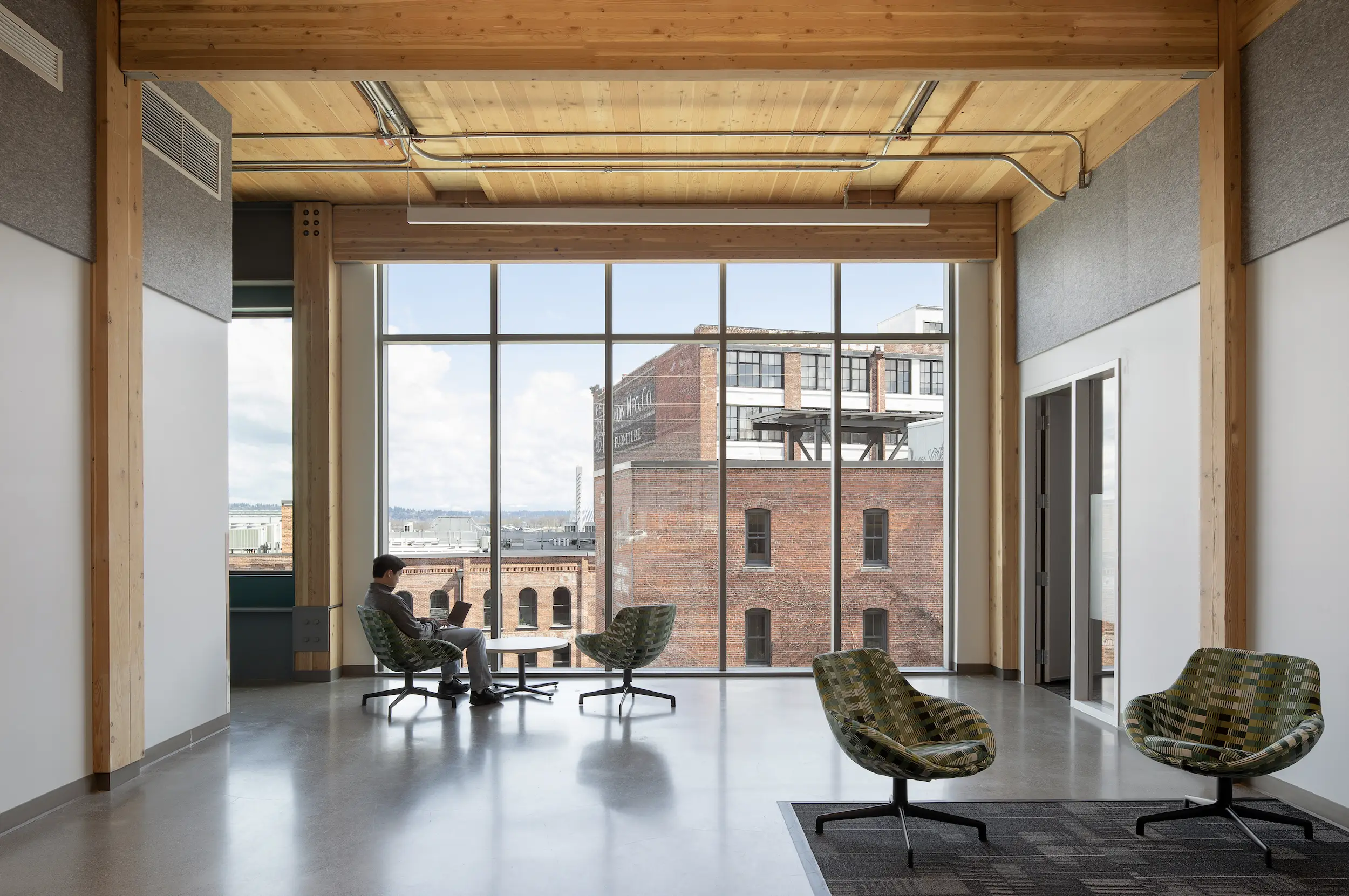
3
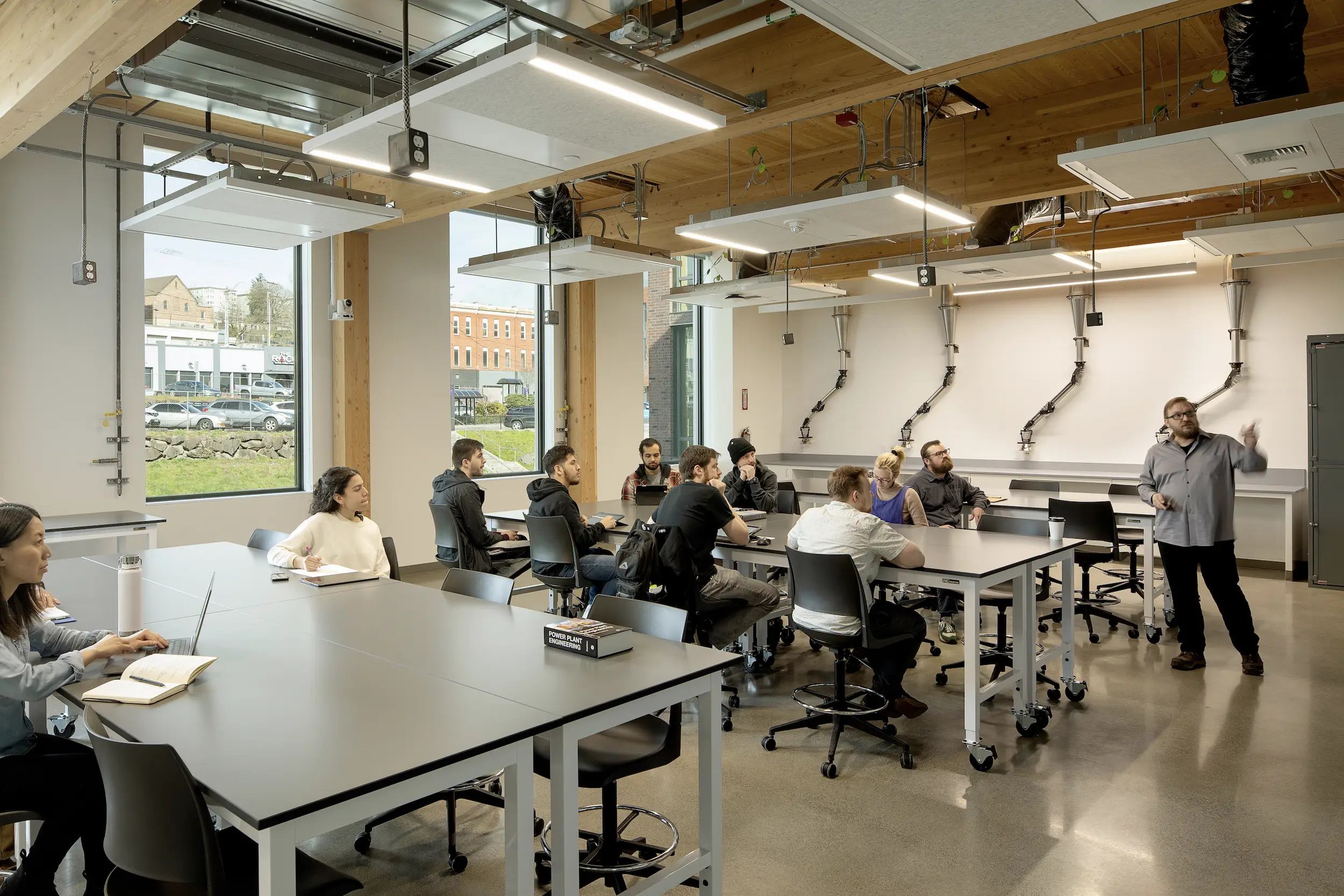
4
A common area looking out toward Commencement Bay and the Port of Tacoma (3); a flexible, daylit lab space (4). Photos © Jeremy Bittermann / JBSA
“Thinking about how the building positions itself relative to these other warehouse structures on campus was something that was important for us, including the great historic mass-timber buildings but also the brick,” said Yao.
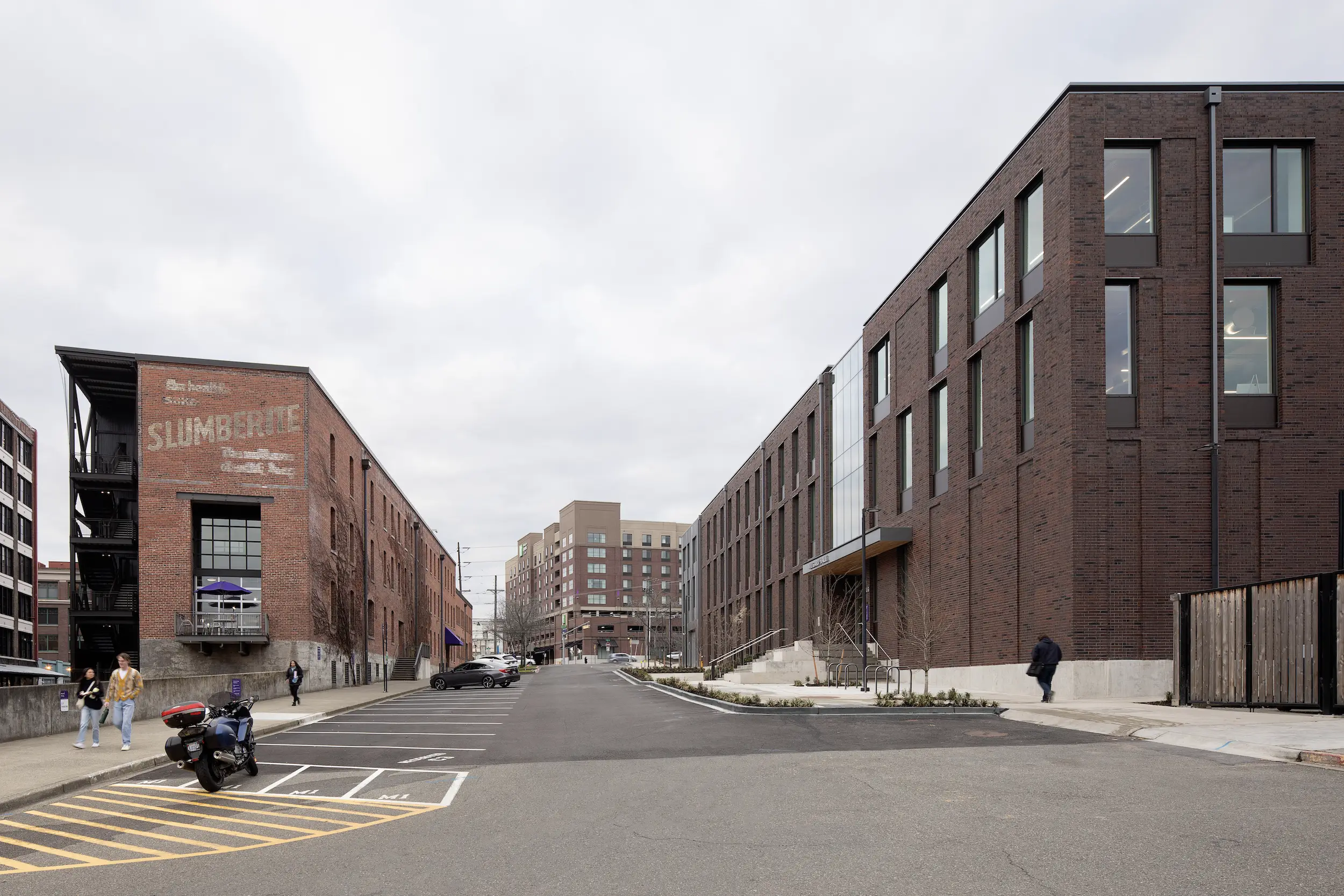
Looking south toward 21st street; the historic Mattress Factory Building can be seen on the left. Photo © Jeremy Bittermann / JBSA
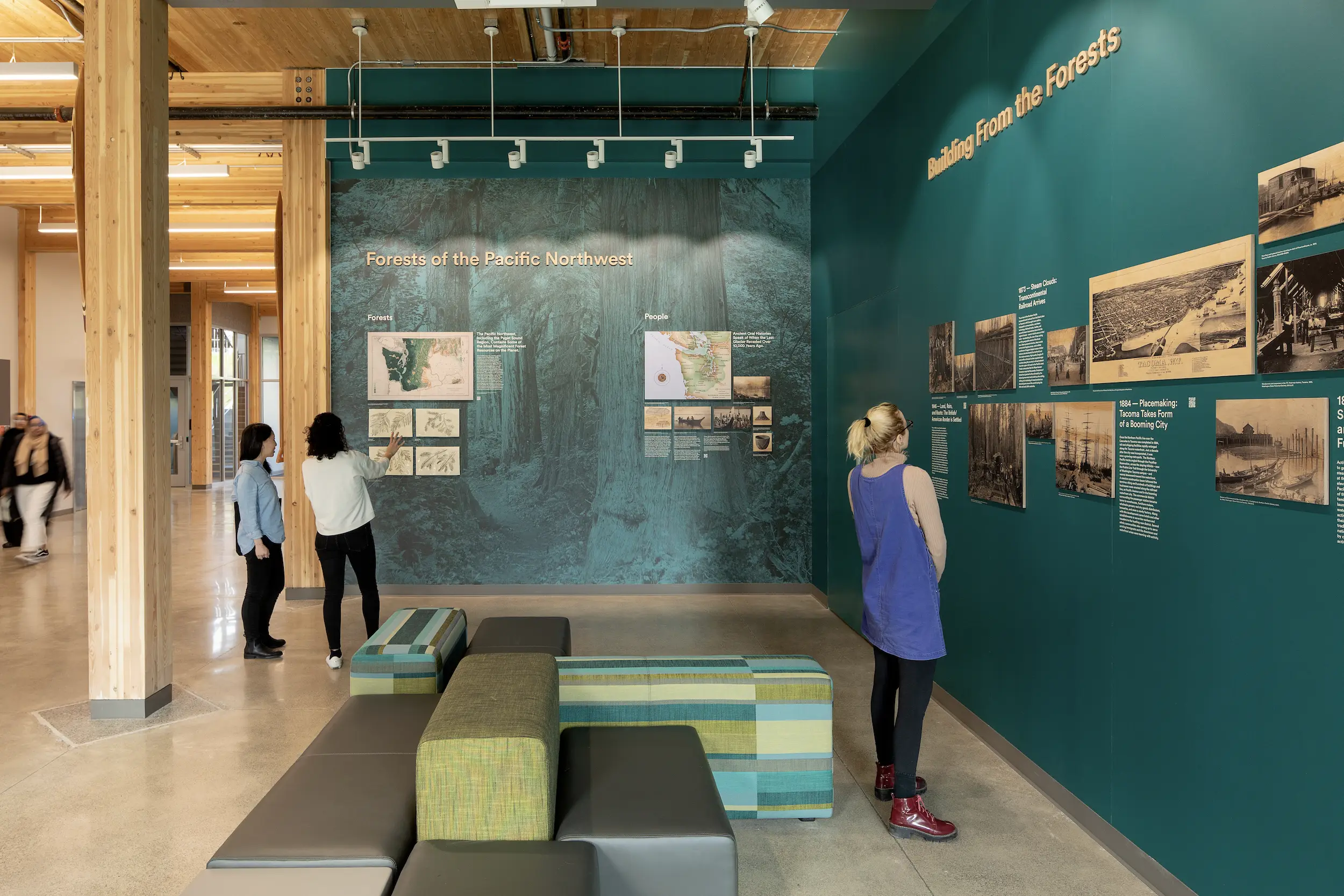
Located off the first-floor Connector is a small exhibition area dedicated to the region’s timber history. Photo © Jeremy Bittermann / JBSA
Tacoma and the South Sound region’s timber heritage is also quite literally on display as part of an informative exhibit located in a student lounge near Milgard Hall’s main entrance. Yao described the historic timber display as a “passion project” for former UW Tacoma chancellor and current School of Engineering professor Mark Pagano, who spearheaded and helped to secure funding for the larger effort. “It’s a nice little moment about how the building is representative of all of these different stories and histories in the area,” she added. “And it’s really about looking towards the future, too.”



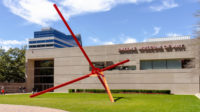
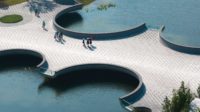
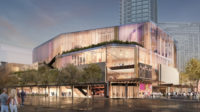
Post a comment to this article
Report Abusive Comment